Publications
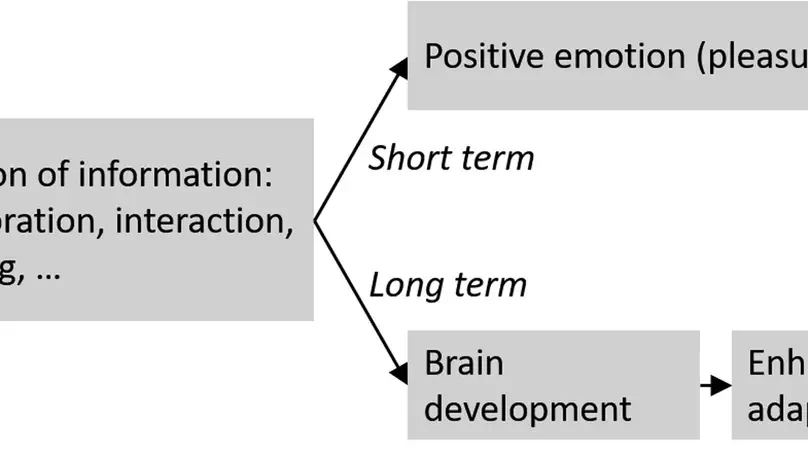
Environmental enrichment, that is making the environment of animals more complex, was first designed to enhance the welfare and cognitive abilities of captive animals, and was more recently applied to farm animals. Enrichments can be sensory, physical, social, occupational, feeding-based, or a mix of these, with a view to improve animals’ welfare. We posit that enrichments share the common factor of providing information to animals so that enrichment is all about providing the animal with a way to acquire information by interacting with the environment. Animals enjoy acquiring information, and the process of acquiring information acts in a way that enables them to better adapt to future environments. This reframed view of enrichment has several implications including prolonging the duration of exposure to an enrichment does not necessarily increase the impact of that enrichment, neutral and even slightly negative stimuli may still be enriching, complex and variable environments are enriching, and the more intensively an animal can engage with the environment, the more it will benefit from enrichments. These implications should be further explored by comprehensive re-analyses of findings from the enrichment literature and/or by dedicated experiments.
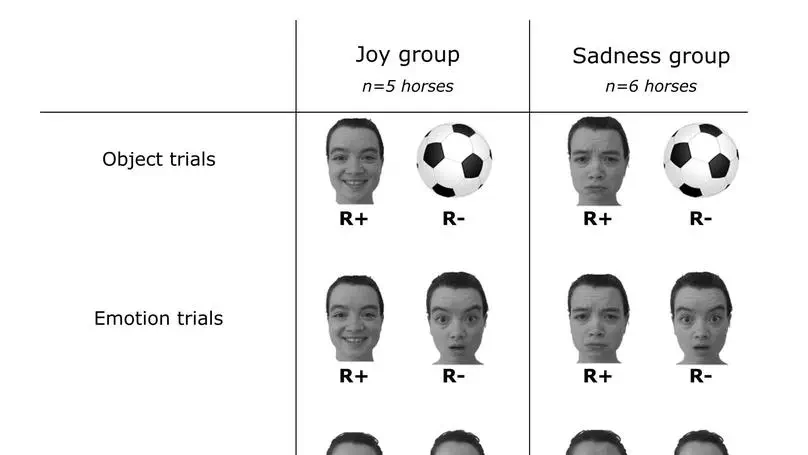
Recently, horses and other domestic mammals have been shown to perceive and react to human emotional signals, with most studies focusing on joy and anger. In this study, we tested whether horses can learn to identify human joyful and sad expressions against other emotions. We used a touchscreen-based automated device that presented pairs of human portraits and distributed pellets when the horse touched the rewarded face. Six horses were trained to touch the sad face and 5 the joyful face. By the end of training, horses’ performances at the group level were significantly higher than chance level, with higher scores for horses trained with the sad face. At the individual level, evidence of task learning varied among horses, which could be explained by individual variations in horses’ ability to identify different human facial expressions or attention issues during the tests. In a generalization test, we introduced portraits of different humans than those presented during training. Horses trained with the joyful face performed better than chance, demonstrating generalization. Conversely, horses trained with the sad face did not. Horses also showed differences in learning performance according to the non-rewarded emotion, providing insights into horses’ cognitive processing of facial expressions.
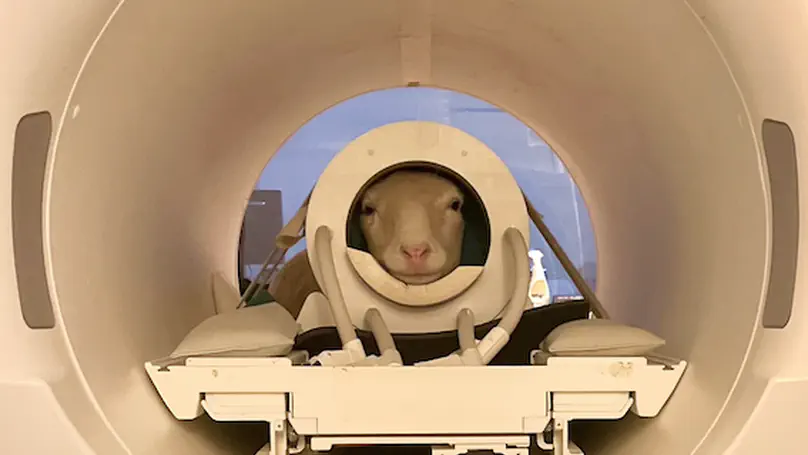
Magnetic resonance imaging (MRI) is a non-invasive technique that requires the participant to be completely motionless. To date, MRI in awake and unrestrained animals has only been achieved with humans and dogs. For other species, alternative techniques such as anesthesia, restraint and/or sedation have been necessary. Anatomical and functional MRI studies with sheep have only been conducted under general anesthesia. This ensures the absence of movement and allows relatively long MRI experiments but it removes the non-invasive nature of the MRI technique (i.e., IV injections, intubation). Anesthesia can also be detrimental to health, disrupt neurovascular coupling, and does not permit the study of higher-level cognition. Here, we present a proof-of-concept that sheep can be trained to perform a series of tasks, enabling them to voluntarily participate in MRI sessions without anesthesia or restraint. We describe a step-by-step training protocol based on positive reinforcement (food and praise) that could be used as a basis for future neuroimaging research in sheep. This protocol details the two successive phases required for sheep to successfully achieve MRI acquisitions of their brain. By providing structural brain MRI images from six out of ten sheep, we demonstrate the feasibility of our training protocol. This innovative training protocol paves the way for the possibility of conducting animal welfare-friendly functional MRI studies with sheep to investigate ovine cognition.
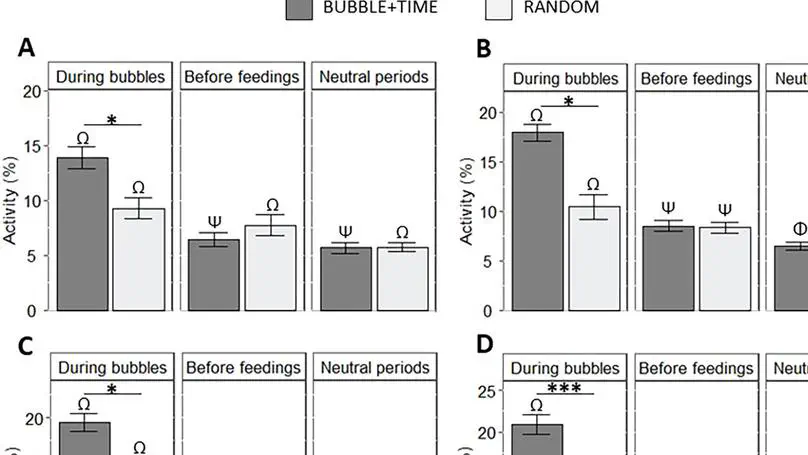
Cognitive enrichment is a promising but understudied type of environmental enrichment that aims to stimulate the cognitive abilities of animals by providing them with more opportunities to interact with (namely, to predict events than can occur) and to control their environment. In a previous study, we highlighted that farmed rainbow trout can predict daily feedings after two weeks of conditioning, the highest conditioned response being elicited by the combination of both temporal and signalled predictability. In the present study, we tested the feeding predictability that elicited the highest conditioned response in rainbow trout (both temporal and signalled by bubbles, BUBBLE + TIME treatment) as a cognitive enrichment strategy to improve their welfare. We thus analysed the long-term effects of this feeding predictability condition as compared with an unpredictable feeding condition (RANDOM treatment) on the welfare of rainbow trout, including the markers in the modulation of brain function, through a multidisciplinary approach. To reveal the brain regulatory pathways and networks involved in the long-term effects of feeding predictability, we measured gene markers of cerebral activity and plasticity, neurotransmitter pathways and physiological status of fish (oxidative stress, inflammatory status, cell type and stress status). After almost three months under these predictability conditions of feeding, we found clear evidence of improved welfare in fish from BUBBLE + TIME treatment. Feeding predictability allowed for a food anticipatory activity and resulted in fewer aggressive behaviours, burst of accelerations, and jumps before mealtime. BUBBLE + TIME fish were also less active between meals, which is in line with the observed decreased expression of transcripts related to the dopaminergic system. BUBBLE + TIME fish tented to present fewer eroded dorsal fin and infections to the pathogen Flavobacterium psychrophilum. Decreased expression of most of the studied mRNA involved in oxidative stress and immune responses confirm these tendencies else suggesting a strong role of feeding predictability on fish health status and that RANDOM fish may have undergone chronic stress. Fish emotional reactivity while isolated in a novel-tank as measured by fear behaviour and plasma cortisol levels were similar between the two treatments, as well as fish weight and size. To conclude, signalled combined with temporal predictability of feeding appears to be a promising approach of cognitive enrichment to protect brain function via the physiological status of farmed rainbow trout in the long term.
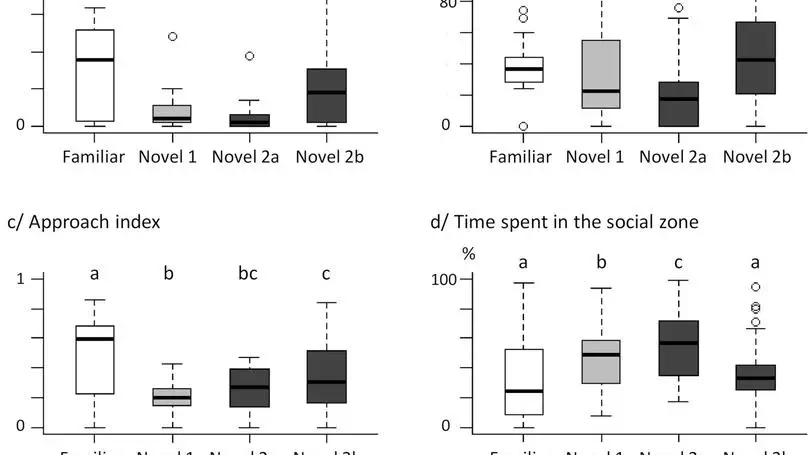
Feed neophobia is a reluctance to eat a novel feed that can last from minutes to days. While it can prevent animals from ingesting toxins, it may also have negative effects on growth and animal welfare. In ruminants, feed neophobia has mainly been studied in sheep and cattle, and only a few studies have focused on goats. This study assessed feed neophobia in goats and aimed to determine whether this is breed-dependent. Six-month-old Saanen (n = 18) and Alpine (n = 13) goats were repeatedly placed in an experimental environment, with a familiar feed, for 5 min per day (days 1–7). The familiar feed was then replaced by two novel feeds on consecutive days (d8-d9), and the second novel feed was offered a second time (d10). Saanen goats habituated better to the situation as, on the last day with the familiar feed, they consumed more, with a greater intake rate, and spent less time near conspecifics than Alpine goats. They also showed a higher approach index than Alpine goats, meaning that they spent more time head in the feed trough while being close to it. Breed however did not influence the behavioural responses of goats when they were exposed to novel feeds. When first exposed to the novel feeds and regardless of their respective palatability, the goats reduced their intake compared to when they received the familiar feed, though they sampled the novel feeds by eating small amounts. They also approached the novel feeds less and spent more time near conspecifics. At the 2nd exposure to the second novel feed, the main behavioural responses were reversed, as intake increased and the time spent near conspecifics decreased, to reach the levels recorded with the familiar feed. Only the approach index remained lower. Thus, our results highlight that goats of both breeds displayed feed neophobia when first exposed to different novel feeds, but the situation was reversed after only one short-term exposure. Further research using more novel feeds, different feed-presentation schemes and longer tests will help to improve the understanding of feed neophobia in goats.